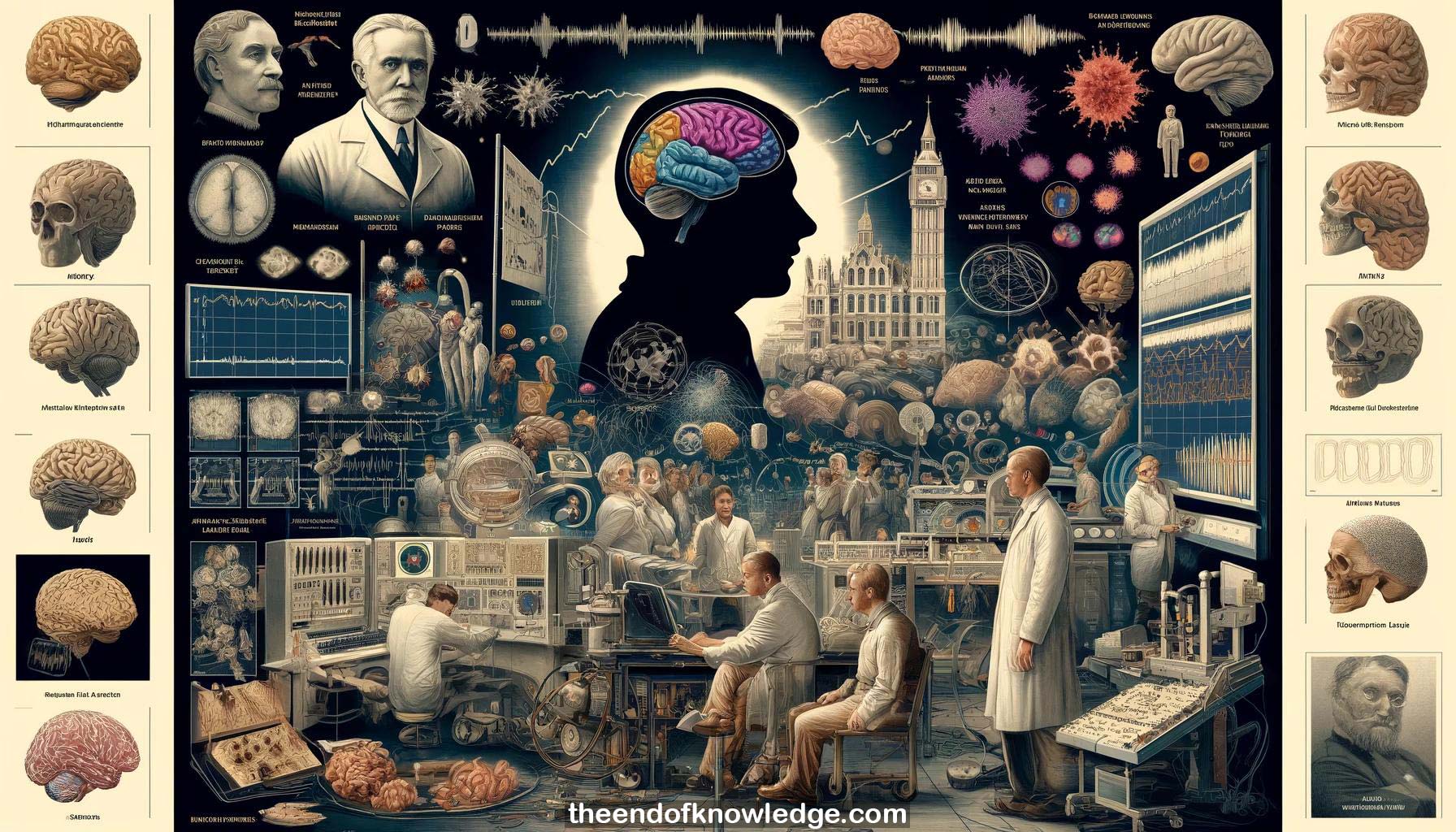 >
>
Concept Graph & Resume using Claude 3 Opus | Chat GPT4 | Llama 3:
Resume:
1.- Claudio Babiloni discusses the discovery of human EEG by Hans Berger in 1924, who termed alpha and beta waves.
2.- Berger's findings were confirmed by Nobel Prize winner Adrian and colleague Matthews in 1934, and by Jasper in 1935.
3.- Quantitative EEG analysis was introduced using spectral analysis by fast Fourier transform and multi-electrode recordings.
4.- Cortical pyramidal neurons are the generators of EEG alpha rhythms due to their spatial orientation of dendrites.
5.- Fernando Lopez da Silva demonstrated that alpha rhythms derive from cortical-cortical and thalamo-cortical networks using dog experiments.
6.- Sleep deprivation reduces cortical source activation of alpha rhythms, capturing differences in vigilance before and after deprivation.
7.- Higher pre-stimulus alpha source activity in occipital, parietal and premotor areas allows better recognition of visual stimuli.
8.- TMS of parietal cortex reduces the number of perceived stimuli, showing its causal role in primary consciousness.
9.- Persistent vegetative state patients who recover consciousness show residual alpha source activity compared to those who don't.
10.- Long COVID patients with more brain fog symptoms show reduced alpha source activity in parietal, occipital and temporal regions.
11.- Resting-state EEG can provide biomarkers of consciousness level, relevant for evaluating long COVID brain fog and consciousness disorders.
12.- In Alzheimer's disease, tau protein accumulates in medial temporal cortex and brainstem, even in preclinical stages without cognitive deficits.
13.- Progression of Alzheimer's involves interaction between amyloidosis and tau protein, leading to cognitive deficits and dementia.
14.- Alzheimer's patients with mild cognitive impairment show less alpha and more delta source activity compared to non-Alzheimer's MCI.
15.- Some Alzheimer's MCI patients show epileptiform EEG activity, with higher delta source activity in occipital and temporal regions.
16.- Amyloid accumulation in Alzheimer's can degenerate cholinergic systems regulating brain arousal and attention.
17.- Alzheimer's MCI patients with more cholinergic tract lesions have less alpha source activity than those with less impairment.
18.- Resting-state EEG biomarkers reflect the functionality of ascending neuromodulation systems using acetylcholine and dopamine.
19.- Alpha rhythms derive from cortico-cortical, thalamo-cortical networks and ascending cholinergic systems.
20.- Resting-state EEG biomarkers can indicate vigilance and consciousness levels in patients with brain diseases.
21.- In the sleep deprivation study, cortical sources of EEG in limbic regions were estimated using the iLoreta software.
22.- Alpha rhythms are focused on because they show clear peaks in the power density spectrum compared to less clear beta/gamma.
23.- To improve dementia, lifestyle changes like physical activity, healthy diet, social engagement and mental stimulation are important.
24.- Current guidelines don't indicate EEG for Alzheimer's diagnosis; amyloid/tau measurements are needed. But EEG can provide vigilance biomarkers.
25.- Some journalists historically suggested using EEG to select peaceful horses, but this claim is not scientifically validated.
26.- Ernst Niedermeyer, a Johns Hopkins professor, had a picture signed by himself that he pretended was from Hans Berger.
27.- There are controversial views about Hans Berger's personal character and political affiliations.
28.- The main focus should be on Berger's invaluable contribution of discovering human EEG.
29.- Babiloni concludes by thanking the audience for their attention to his presentation celebrating 100 years of human EEG.
30.- The moderator thanks Babiloni for the insightful presentation and ends the session.
Knowledge Vault built byDavid Vivancos 2024